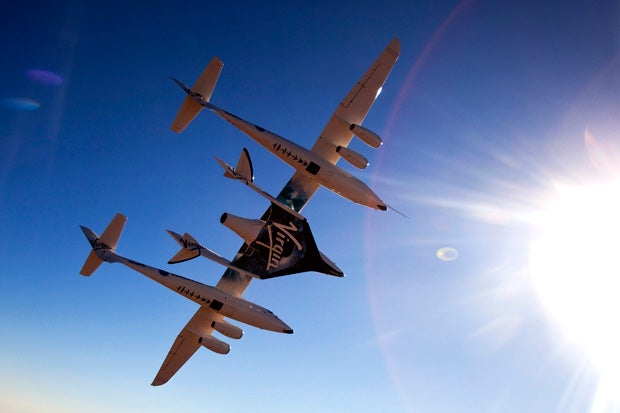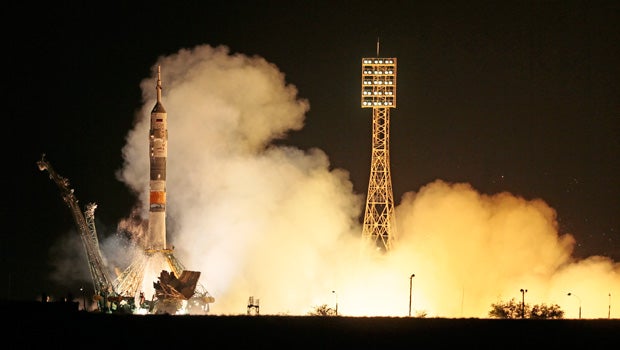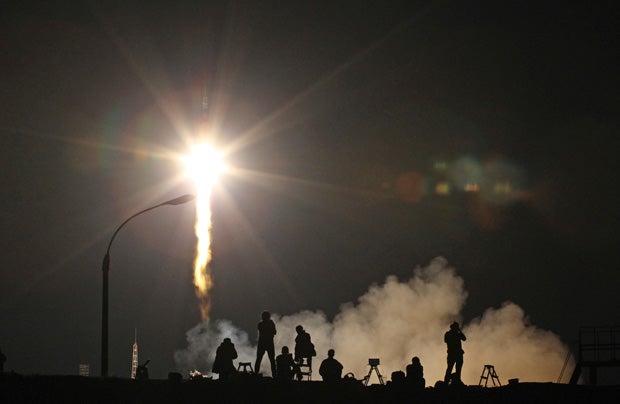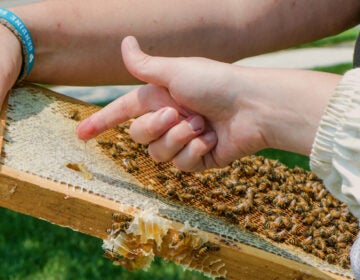Stars in space
ListenLeonardo DiCaprio is heading to space next year on Virgin Galactic; fastest trip ever to International Space Station; final days to see Jupiter after sunset and last opportunity to see Jupiter with Mercury, Venus, this close together until 2026!
June 3, 2013
[Dave Heller] He braved the stormy seas in James Cameron’s Titanic, and now 16 years on, he’ll explore outer space. And this time for real. Let’s look aloft on Newsworks Tonight with Derrick Pitts, chief astronomer at the Franklin Institute. Derrick, lucky Leonardo DiCaprio. How did he win this role?
[Derrick Pitts] Leonardo Dicaprio is just one of those lucky individuals that has decided that he wants to take a trip into space. And so for a measly $200,000, he can fly aboard the Virgin Galactic Spaceship2 as it begins its flights next year for all the rest of us regular people who want to try to get to space. So in particular instance though, he gets to take a buddy with him.
Well that must be his co-star, Kate Winslet.
Wouldn’t that be great? But unfortunately it isn’t. It looks like it’s a Russian business person who won this opportunity in an auction. This person actually bid 1.5 million dollars for the opportunity to fly with DiCaprio on board Spaceship2 when it begins its flights next year.
Gosh, I thought 200-thou was expensive!
-

(AP Photo/Lionel Cironneau)
Yeah, it seems like it would be, but what an opportunity to ride with maybe this person’s movie star, if you will. To be in space with that person for a brief period of time and such an unusual and really remarkable experience is maybe worth that to some people.
Now is he going off on the maiden voyage?
No, it won’t be the maiden voyage he’ll go off on; he’ll go on one of the subsequent voyages next year, but it will certainly be one of the first say 10, first 20 voyages that are flown as the program begins its mission of carrying people up to lower Earth orbit. So early on, he’ll be used as a way to entice other people to purchase tickets to make the trip to space.
I presume this requires neither the degree of rigor nor training that astronauts must go through.
You know, you really can think of this as a form of extreme tourism. An extreme tourism in the sense that many of us sort of dip our toe in the water of extreme tourism when we take a trip to some typically Caribbean country and we have a chance to ride on a zipline through the forest. Well, that’s a form of extreme tourism, a pretty safe version. But there are other forms of extreme tourism — say doing things like base-jumping from some exotic location. Well now this is a much more extreme form of tourism, and it doesn’t really require all of the same rigorous training and preparations that are needed if you were going to be an astronaut who’s going to live and work on Space Station, and possibly even take space walks. That’s a different sort of thing all together. This is a quick trip that you can do in an afternoon. You go up and spend a half-an-hour to maybe twenty minutes above the 62-mile line that marks space and then you come back. So you can literally have lunch at noon, go up and make your flight into space and be back in time for cocktails before dinner.
It’s still rare air for most of us. Does Virgin Galactic foresee a time anywhere in the near future when that price will come down substantially?
No, in fact Virgin Galactic’s prices have gone up slightly because of inflation since they began the program. But, there are other competitors in the field whose prices are lower and will be even lower than this. So what we see is an expansion of this opportunity for this kind of experience for regular people.
-

This image provided by Mark Greenberg/Virgin Galactic shows WhiteKnight2 with SpaceShip2 attached, over Mojave, Calif., July 15, 2010. (AP Photo/ Mark Greenberg/Virgin Galactic)
Derrick, last week we hailed the oh-so-slow-and-steady Mars Rover Opportunity. Well now let’s take it into overdrive.
We can contrast that now, Dave, with the fastest trip on record of astronauts leaving Earth to arrive at International Space Station. Now that trip is being supplied by the Russians onboard their Soyuz launch vehicles, and it typically has been a ride that takes about two days. Launch today, orbit around the earth a number of times, and then head on to International Space Station; [this is done] for safety reasons, making sure the docking craft is in good condition, making sure International Space Station is in the right location, catching up to it slowly over time. What has been realized though is that we don’t really need to spend those extra days on orbit just getting to Space Station; we could actually make the trip in a very short time. So, in flights previous to last week’s flight, the trip took about 6 hours, maybe a little over 6 hours. Well just last week, three astronauts made the trip to International Space Station in 5 hours, 39 minutes from launch to docking which is a record for this trip to getting to International Space Station.
We’re shaving minutes, I presume it’s also shaving dollars.
It shaves dollars and it also shaves discomfort for the astronauts because if you look at the Soyuz capsule, it is really, really a tight fit for three astronauts. There’s barely enough room to move, they can’t even reach up to press the buttons to operate the capsule with their fingers. They have to use long sort of pointers or little sticks to sort of tap the buttons that they need to press. And it’s a tight, tight fit. So rather than having them being cramped in those positions for one and a half to two days, why not get them there as soon as possible and alleviate all of that discomfort and have them feeling better as they reach orbit?
-

The Soyuz-FG rocket booster with Soyuz TMA-09M space ship carrying a new crew to the International Space Station, ISS, blasts off at the Russian leased Baikonur cosmodrome, Kazakhstan, Wednesday, May 29, 2013. The Russian rocket carries U.S. astronaut Karen Nyberg, Russian cosmonaut Fyodor Yurchikhin, and European Space Agency astronaut Luca Parmitano. (AP Photo/Mikhail Metzel)
-

Photographers take pictures of the launch of Soyuz-FG rocket booster, May 29, 2013. (AP Photo/Mikhail Metzel)
Derrick, we’re getting closer to summer. What’s available to be seen in the night sky this week?
Last week, Dave, we talked about three planets in the evening sky — Venus, Jupiter and Mercury that were coming close together to be seen over the past weekend. Well this week they’re still together but their positions are changing slightly. It is though that this the last week we’ll not only be able to see the three of them together but that we’ll be able to see Jupiter in the evening sky for this year. However as it turns out, we’ll be able to see a thin crescent moon just below Venus about 30 minutes after sunset this Sunday night coming up. So that’ll be a great time to check and see what you can see. You’ll look for Venus 30 minutes after sunset, and then just below Venus you’ll see this very, very thin crescent moon just after new moon. And you’ll still be able to see Mercury but Jupiter will no longer be part of the view. At the same time, Saturn rules the evening sky. So high over head, just after sunset, you can begin to pick up Saturn just a little bit to the east of mid-sky and watch that all night long, so it’s a perfect time to see. And some of the constellations of the summer sky are fully up in the east as the sky darkens. So you can see all the main constellations of summer including the constellation Hercules with its great cluster directly over head by 10 p.m.
Audio player photo: Flickr user abarze
WHYY is your source for fact-based, in-depth journalism and information. As a nonprofit organization, we rely on financial support from readers like you. Please give today.




